Matador Network's Blog, page 64
March 3, 2025
In Southwest Florida, Outdoor Dining Is More Than a Meal — It’s an Experience

Outdoor dining in and around Fort Myers is nothing short of inspired. Think elevated food trucks, imaginative mixologists, and experimental chefs. And the best thing about all that culinary talent gracing Southwest Florida is you can enjoy many of their creations outside in the fresh air. Below are some of the essential outdoor dining and drinking spots to hit on your next trip to the islands, beaches and neighborhoods of Fort Myers.
Bruno’s of Brooklyn
Photo: Bruno’s of Brooklyn
Bruno’s of Brooklyn draws its culinary inspiration from Sicilian comfort food and its energy from NYC’s historically Italian neighborhoods. Dinner at a sidewalk table on the red-brick streets of downtown Fort Myers will transport you to both places, all while upping your appreciation for Southwest Florida’s dining scene.
As a kid, owner Calcedonio “Cal” Bruno spent his summers in Sicily, where most of the day was dedicated to planning and preparing meals. This was his training ground, and he aims to bring that experience to his customers through house-made pasta, deliciously dense meatballs, and Sicilian classics like arancini. Expect nods to the maritime cultures of Brooklyn, Florida, and Italy’s largest island with dishes from the sea, such as octopus with garlic and cherry tomatoes.
Bruno’s of Brooklyn: 2149 First St, Fort Myers
Dixie Fish Company
Photo: Fort Myers – Islands, Beaches and Neighborhoods
In the 1930s, Dixie Fish Company was a busy trading post hawking clams, oysters, mullet, and everything else caught in the waters off Fort Myers Beach. Lunch and dinner in the historic building — open-air, tin-roofed, and set on pylons in Estero Bay — feel like lessons in the area’s local economy, with menus built around fresh catches like grouper, mahi mahi, mussels, and Gulf pink shrimp. Elements of Southern and Caribbean cuisine are then layered in for extra flavor — you’ll see everything from fried green tomatoes and collard greens paired with grouper cheek bites to pineapple tartar, coconut-crusted options for your catch of the day, and ceviche.
Dixie Fish Company: 714 Fishermans Wharf, Fort Myers Beach
Beacon Social Drinkery
Photo: Fort Myers – Islands, Beaches and Neighborhoods
At the Beacon Social Drinkery in downtown Fort Myers, floor-to-ceiling windows and doors open onto a rooftop terrace perched 12 stories up, which in turn offers killer views of the Caloosahatchee River. Whether you’re sitting inside at the sleek bar or tucked away on the veranda’s outdoor couch, you can watch poofy, flat-bottomed clouds roll in while you enjoy a snack — perhaps Waygu sliders, chicken yakitori wings, and a smoked lemon drop cocktail.
If you get caught up in the party scene that tends to keep the place lively during the high season, come back on Saturday or Sunday morning for the Penthouse Brunch. Dishes like the aptly named “Hangover” with chorizo, eggs, potatoes, and Hollandaise sauce should set you straight.
Beacon Social Drinkery: 2200 Edwards Dr, Fort Myers
Blue Dog Bar & Grill
Photo: Fort Myers – Islands, Beaches and Neighborhoods
Colorful and quirky Matlacha, a community located between Pine Island and the mainland, encompasses just 0.69 square miles — and only 0.2 square miles of that is land. So perhaps it’s no surprise that this is where you’ll find some of the freshest seafood around (along with some of the folks who caught it).
Blue Dog Bar & Grill is a requisite stop, a humble building combined with a menu that screams Dean & DeLuca. The house-smoked mullet fish dip with house-pickled jalapenos always gets mouths watering, while the Pine Island lump blue crab cakes are a delicious preparation of the succulent local crustacean. Take a seat on the deck, fronting a quiet arm of Matlacha’s canal system, and keep an eye out for guys and gals sitting at the bar in knee-high white rubber boots — you might have them to thank for your meal.
Blue Dog Bar & Grill: 4597 Pine Island Rd, Matlacha
Boathouse Tiki Bar & Grill
Photo: Fort Myers – Islands, Beaches and Neighborhoods
Whether you’re sitting around a fire pit on the human-made beach, lolling in the heated pool, or digging into shrimp tacos on the patio, the mood at Boathouse Tiki Bar & Grill in North Fort Myers revolves around good friends and good times. It may be riverside, but with its thatched tiki hut and relaxed atmosphere, the vibes are distinctly island. There’s live music every day (sometimes twice a day) along with cornhole on the beach, happy hour specials, football on TV, and all-day pool use for patrons. Pull up in a yacht or a rental car — all are welcome here.
Boathouse Tiki Bar & Grill: 17101 SR 31, Fort Myers
Gather
Photo: Fort Myers – Islands, Beaches and Neighborhoods
You could describe Gather’s aesthetic as living room chic, with leather couches, modern light fixtures, trendy cocktails, and great views. But it’s the Cape Coral restaurant’s outdoor seating, where patrons get an up-close look at the Tarpon Point Marina, that really sells the scenery.
Cocktails like the “Very Demure” (vodka, lychee liqueur, and lemongrass) and “This Mule Is on Fire” (burnt-pineapple-infused mezcal, house-made fermented pineapple simple syrup, and lemon juice) showcase the spot’s mixology chops. Pair your drink of choice with menu items like the gruyère and pancetta pierogi or black cod with saffron “risottouash,” and you may not want to go back to your own living room at all.
Gather: 5971 Silver King Blvd STE 116, Cape Coral
Rooftop at Riverside
Photo: Main Course Hospitality/Rooftop at Riverside
Rooftop at Riverside’s two-story digs may look like your average modern bar and restaurant, but out back is a veritable playground for adults (and kids!) surrounded by the best food trucks in Bonita Springs. There are picnic tables set out with lawn games and a stage for live music. Four food trucks complete the park-like setting, serving everything from birria sandwiches and shrimp po’boys to goat cheese and truffle pizza. There are also daily happy hour specials, monthly community events, DJs, bingo, and trivia nights.
Rooftop at Riverside: 27333 Old 41 Rd, Bonita Springs
Junkanoo Below Deck
Photo: Fort Myers – Islands, Beaches and Neighborhoods
Sometimes, the best place to be in Southwest Florida is out on a deck with the salty breeze blowing in your face and a colorful drink in hand. Junkanoo Below Deck is the Fort Myers Beach institution where locals go for exactly that. It’s located on the beach’s back bay, with the inside fully open to the outside. If you’ve come to the Fort Myers area to have a good time, this is one experience you won’t want to miss — just ask the manatee who’s started showing up at Junkanoo’s dock.
Junkanoo Below Deck: 4761 Estero Blvd, Fort Myers Beach
Crazy Dingo Brewing Co.
Photo: Fort Myers – Islands, Beaches and Neighborhoods
Crazy Dingo Brewing Co. in Fort Myers couldn’t be more Instagrammable if it tried. Onsite, you’ll find a small working farm with goats and cows ready for treats, a community garden, a farmers market, and a very cute tin-roof brewery serving small-batch beers. Make yourself comfortable at picnic tables and benches not far from neat rows of crops.
At night, there’s a rotating cast of musicians and DJs, and the kid- and dog-friendly daytime scene can turn into a party. When hunger strikes, head to whichever food truck is stationed at the farm that day — rotating eats range from Latin or Vietnamese fusion to wood-fired pizzas and Caribbean fare.
Bonus: Crazy Dingo is just down the road from Southwest Florida International Airport (RSW), making it an ideal stop if you need a place to hang before your flight out.
Crazy Dingo Brewing Company: 8500 Penzance Blvd, Fort Myers
There are around 240 daily flights to RSW and direct flights from more than 50 US cities. That makes the islands, beaches and neighborhoods of Fort Myers an irresistibly quick and convenient getaway. Once you’re there, temps will rarely drop below 60 degrees — so, really, any meal not taken with the sun shining down on you would be a seriously missed opportunity. 
February 28, 2025
What to Pack for a 7-Night Mediterranean Cruise to Spain, France, and Italy

I’m usually a carry-on-only type of traveler. But packing for my first cruise? I packed more than I ever have and ended up needing an additional checked bag—more even than my six-week stay in Guatemala, more than my trip to British Columbia in -20°F weather.
A group of friends invited my partner and I to join them on a Virgin adults-only cruise in October last year, where we spent a few days in Barcelona before hopping on the Scarlet Lady for a Mediterranean voyage through Barcelona, Toulon, Corsica, Marina di Carrara, Rome, and Ibiza.
I thought packing would be simple—sunglasses, a bathing suit, some clothes, right? Nope. The fun thing about cruises is that there’s so much to do, but that’s also what makes it hard to know exactly what to bring. Virgin Voyages has themed nights (including a Red Night and a pajama party) and stopover excursions ranging from biking and kayaking to full-day walking tours, all free of screaming kids. Even if you skip the excursions, there are multiple stops and plenty of sightseeing opportunities with varying array of climates from balmy Ibiza to rainy days in Toulon. Then there’s the whole “what not to pack” rule for cruises (looking at you, clothes steamer) that adds another layer.
After all that, I’ve put together a list of must-haves that I’d definitely bring next time I’m stuffing my suitcase for another Med Sea tour.
Listen, all of these items are personally paid for, not gifted or incentivized. They’re also the ones I personally recommend and will continue to use. Just so you know, to help us afford rent, Matador may collect a small commission from some (not all) of the links on this page if you decide to make a purchase.
Clothes to pack for a cruiseLinen Long Sleeve Button Down
Photo courtesy Kelsey Wilking
A staple everyone should have in their repertoire, a long-sleeve linen shirt offers breathability, protects against chilly days and sunburns, and is lightweight and easy to pack. It’s a no-brainer, and I found myself wishing I had packed more than one on this trip.
Price: $44.99
The Harlow Short in Drapey Twill
Photo: Josh Wilking
These shorts exude effortless Italian vacation vibes. They’re long enough for plenty of activities without offending the locals, incredibly comfortable and airy, and versatile enough to style with ease. This is the kind of purchase that makes you want one in every color.
Price: $39.99 – 49 percent off
OLUKAI Ohana Women’s Beach Sandals
Photo courtesy OLUKAI
These will be my ride-or-die flip-flops until the end. The company uses gum rubber with 30% recycled materials, offers two vegan options, and has a nonprofit dedicated to preserving local Hawaiian history and culture. The arch support provides ample comfort for my flat feet, the footbed grips your feet to prevent slipping, and the soles offer support for all-day walking. And I did—I walked in these all day on some days. No blisters, no break-in time. They’re just right.
Price: $79.99
ASTR the label Women’s Gaia Dress
Photo courtesy Kelsey Wilking
I’m sure you’ve seen Scarlet Night photos pop up on your social feed—everyone dripping in that signature Virgin color. This all-red night is the perfect excuse to dress up fancier than your usual walk-around-town attire. I bought this red dress—since I didn’t own anything in this shade—that felt glamorous without being over the top. But honestly? You can go all out for this themed night. Everyone was dressed to the nines in fancy outfits, sparkly red-hued suits, and top hats. In October, the temperature was chilly on the top deck during the party, but with dancing and bubbly, you warm up fast.
Price: $79.99
Travel accessories to pack for a cruiseBeauty of Joseon Daily Relief Sunscreen
Photo courtesy Amazon
South Korean skincare is on a whole other level. Seriously, this sunscreen blends seamlessly, offers all-day protection with its FDA-approved UVA filters, sits nicely under makeup, and keeps my skin barrier moisturized—especially important since traveling tends to dry out my skin. One of my favorite brands, Beauty of Joseon, offers a sunscreen stick too that’s easy to pack for days spent in the Mediterranean sun.
Price: $18
Lemonhead Spacepaste® Glitter + Flash Temporary Tattoos
Photo: Kelsey Wilking
You really can’t go on a cruise without glitter or some fun temporary tattoos—it’s practically a rule (I’m pretty sure I read that somewhere). With all the planned parties on board and a stop in Ibiza for a night out, you’ll be glad you packed these fun party essentials.
Price: $14
Torriden Ceramide Lip Balm
Photo courtesy Torriden
The salty sea air, long days spent outdoors, chilly nights, dips in the hot tubs, and time on the boat left my lips feeling raw and chapped. This lip balm—a South Korean brand (are we surprised?)—is a lifesaver. It worked so well that I even ended up using it on my cracked knuckles when Aquaphor couldn’t do the trick. Plus, the ceramides help improve skin elasticity.
Price: $19.99
Sea-Band Anti-Nausea Acupressure Wristband for Motion Sickness
Photo courtesy Sea-Band
Not all of us were sailors in a past life. My husband suffers from intense motion sickness, so even though we had never been on a cruise before, we wanted to be extra cautious since he tends to get nauseous in cars and on ferries. We may have overdone it by stocking up on patches and medicine—including acupressure bands—but these bands proved most effective. He didn’t feel nauseous once while on the boat, even during an unplanned day at sea when it was too choppy to dock.
Price: $15.40
Purple Tree Post-Celebration Wellness Vitamins
Photo courtesy purple tree
I promise I’m not trying to sell you snake oil here, but these vitamins were essential for keeping any hangovers at bay. The first day we stepped on the cruise, we were shoved free champagne to drink to start the party. Needless to say, these vitamins were essential and I can honestly tell you after many days of drinking, I felt amazing every single day. Now a permanent staple in my travel toiletry kit.
Price: $24.95
Osprey Farpoint 70 Travel Pack
Photo: Kelsey Wilking
Our Osprey Farpoint 70 backpack is from seven years ago so that’s a testament to how well they hold up. I found one that is similar to ours with a detachable day pack which is very much needed for sightseeing off the ship.
RORRY Portable Charger
Photo courtesy RORRY
This charger includes a charging port for my Apple Watch and features two different built-in cables for different phones (I could use my new iPhone 16 while my husband could use his iPhone 12). The built-in cables eliminate the hassle of bringing extra cables when packing on the go. It easily fits in our daypack, charges quickly, and is far more convenient than packing my Apple Watch cord separately. I love it overall and now use it for every trip.
Price: $32.99
YETI Yonder Water Bottle
Photo courtesy YETI
I love my Yeti water bottle, which I’ve been using for four years. It keeps my water cold, but it’s heavy and adds extra weight when traveling. For daytime excursions, I found myself wanting a lighter option. This one fit the bill—it’s BPA-free, lightweight, and leakproof. Although it doesn’t keep your beverage cold, its European design means you’ll fit right in. 
Price: $25
More like thisTravelHow to Plan a Stress-Free Trip to France: A Guide for Your First Big TripBirdwatching in Saskatchewan: How to Spot the Province’s Most Stunning Birds

License plates in the Canadian Prairie province of Saskatchewan carry the slogan “Land of Living Skies,” and that makes birders smile from ear to ear behind their binoculars. The spacious province comes by its moniker honestly — wide-open spaces abound in Saskatchewan, and a variety of habitats ranging from woodlands and wetlands to badlands and the boreal create havens for both resident and migrating birds. It also has the distinction of being one of the few places where two of the four North American Flyways overlap. In short, there be birds in Saskatchewan (and you should be there, too).
BIRDING IN SASKATCHEWAN:WHERE TO GO & WHAT YOU’LL SEEThe Meewasin Valley

Photo: Agami Photo Agency/Shutterstock
The city of Saskatoon is bisected by the South Saskatchewan River as it flows through the Meewasin Valley, an ecosystem that has been protected for decades to ensure its natural resources remain vibrant and accessible. Meewasin means “it is beautiful” in Cree, and the area’s many bird species only help prove the point. Join the Birding Breakfast at Beaver Creek Conservation Area and follow a Meewasin guide along a trail to identify and track a few resident birds, plus some of the migratory ones. Back at the interpretive center, enjoy local coffee and a continental breakfast box in the great outdoors. For a deeper dive, jump on the Circle Drive loop trail for 10+ miles of exploration.
What you’ll see: Meewasin is songbird central. Keep your eyes peeled and your field notebook handy for the Gray Catbird, Cedar Waxwing, Spotted Towhee, and Magnolia Warbler.
How to get there and where to stay: Meewasin is right in Saskatoon, one of Saskatchewan’s two major cities, so proximate lodging is easy to find. Take your pick, for example, between the modern Alt Hotel Saskatoon and the historic Delta Hotels Bessborough.
Redberry Lake Biosphere Region
Photo: Tourism Saskatchewan/ Neil Zeller Photography
Two landscapes collide to create something irresistible to birds within the Redberry Lake Biosphere Region, which was designated as a UNESCO Biosphere Reserve in 2000. Situated where boreal meets grasslands, it’s filled with towering balsam poplar, trembling aspens, and oak groves along with rolling open plains. The region is home to the Redberry Lake Migratory Bird Sanctuary, an important migratory spot for the Tundra Swan, the critically endangered Whooping Crane, and tens of thousands of ducks. Take your pick from the Songbird Morning or Night With Owls experience — both offer observations, a banding demonstration, and a cookout. With 188 species listed here, birders should be able to make a few checkmarks, including Species at Risk Act birds like the aforementioned Whooping Crane, Peregrine Falcon, and Piping Plover.
What you’ll see: The Redberry Lake Biosphere Region is 95 percent open water, so it’s all about shorebirds and waterfowl. Along with the White Pelican, look for terns, loons, grebes, and gulls, as well as the Great Blue Heron, Black-crowned Night Heron, Spotted Sandpiper, Killdeer, American Avocet, Willet, Upland Sandpiper, Marbled Godwit, Wilson’s Snipe, and Wilson’s Phalarope.
How to get there and where to stay: Campsites are available at Redberry Lake Regional Park. Alternately, you’ll find modern hotels in North Battleford about 40 miles to the west, and Saskatoon is around an hour’s drive south.
Last Mountain Lake National Wildlife Area
Photo: Tourism Saskatchewan/ Neil Zeller Photography
There’s history here. The Last Mountain Lake Migratory Bird Sanctuary was the first bird sanctuary established in North America, and it’s served as a critical habitat ever since. Located between Regina and Saskatoon, the long strip of lake is also part of the Western Hemisphere Shorebird Reserve Network, among other designations, making it a must-stop for birders. There are trails and observation towers, along with self-guided interpretive trails with a floating dock and bird blind that make a DIY outing easy. Guided birding options are available through the park and select local operators.
What you’ll see: The Sandhill Crane, Double-crested Cormorant, Ring-billed Gull, California Gull, Common Tern, and American White Pelican take center stage here. Water control structures by Ducks Unlimited Canada allow lake levels to be manipulated, providing additional mud flats for shorebirds like plovers, avocets, and sandpipers.
How to get there and where to stay: Last Mountain Lake is northwest of Regina, where hotel options are plentiful. To stay closer to the water, try Centre Street Suites at Regina Beach.
Grasslands National Park
Photo: Tourism Saskatchewan/Chris Hendrickson Photography
In the southern reaches of Saskatchewan lies Grasslands National Park, a landscape of lowland and upland grasslands intersected by rivers and coulees, with patches of badlands. It’s vast, a bit mysterious, and home to birds that crave specific habitats. The area’s prairie dog colonies attract a variety of raptors, owls, larks, and curlews. The upland grasslands see sparrows, pipets, and meadowlarks, while grouse and godwits favor the lower grasslands. In the rivers and coulees, look for ducks, sandpipers, and songbirds galore. Living Sky Wildlife Rehabilitation and Saskatoon Custom Bird Tours offer a three-day tour where Burrowing Owl, Ferruginous Hawk, Golden Eagle, Sprague’s Pipit, Upland Sandpiper, Long-billed Curlew, and Baird’s Sparrow are on the checklist.
What you’ll see: In summer, look for the Upland Sandpiper, Long-billed Curlew, Willet, Marbled Godwit, and Northern Shoveler. Songbirds include the Lark Bunting, Chestnut-collared Longspur, Sprague’s Pipit, Western Meadowlark, Rock Wren, and Loggerhead Shrikes. Come back during the fall migration to see a host of other species, including Harris’s Sparrow, White-throated Sparrow and White-crowned Sparrow, Ruby-crowned Kinglet and Yellow-rumped Warbler, raptors, American White Pelican, Snow Goose, and Sandhill Cranes.
How to get there and where to stay: Grasslands National Park is south of Swift Current and near the Montana border. In the village of Val Marie, The Sanctuary Inn offers suites in a converted church. There’s also The Convent Inn, The Crossing at Grasslands, and the Canalta Hotel Shaunavon. Camping inside the park is another option, with your choice of established sites, backcountry opportunities, and Parks Canada’s oTENTik tent-cabin hybrids.
BIRDING IN SASKATCHEWAN:TIPS AND TRICKS

Photo: Tourism Saskatchewan/Keith Starks
Keep these points in mind to plan the perfect birding adventure in Saskatchewan:
The province is vast, covering over 250,000 square miles (650,000 square kilometers), an area nearly as big as Texas. And with a population of about 1.2 million, it means towns can be spaced far apart (Texas, to continue the comparison, has a population of 30 million). That means you may have to cover long distances between fueling stations, so keep an eye on your gauge.Remember that distances on road signs are posted in kilometers, not miles.In the warmer months in northern areas, sunrise happens early — like 4 AM — so plan for an early start.Go with a pro like Stan Shadick who’s been checking off species for more than 30 years. Shadick is a past president of Nature Saskatchewan and current field trip chair for the Saskatoon Nature Society. You’ll find his name on Birds of the Saskatoon Area and the recently published Birds of Saskatchewan. For a guided excursion, you can get in touch with Shadick through Saskatoon Custom Bird Tours.Last but not least, don’t sleep on planning your birding trip to Saskatchewan — the province’s eagles, owls, sparrows, and cranes are ready to welcome you.
February 27, 2025
The Malahat Skywalk Showcases the Unparalleled Beauty of Vancouver Island

The Malahat SkyWalk offers the most spectacular views on Vancouver Island – and as I learned during a recent visit, the views are only the cap to an outdoor experience that’s more thrilling than any family-friendly spot this vagabond journalist has experienced. To that “SkyWalk” is almost too narrow a word to describe the experience, though I’ve yet to think of a more apt term. Whether you’re an outdoor enthusiast, a photographer, or simply a family looking for a unique activity on Vancouver Island, the SkyWalk is unforgettable. Here’s what to know to plan a trip.
Experiencing the Malahat SkyWalk
Photo courtesy Malahat Skywalk
The drive from Victoria to the Malahat SkyWalk takes about 30 minutes. Our group of five hired a Tesla Model X from Alset Tours, driven by the company’s owner Kevin Belanger, for the ride up from the city. Tickets, which cost $38 per adult and $24 for kids with a family pack available for $99, can be purchased online in advance.
The Malahat SkyWalk’s elevated walkway is a 600-meter-long treetop path that winds through a breathtaking Arbutus and Douglas Fir forest, offering a a beautiful elevated hike before reaching the spiral tower. Constructed using locally sourced Douglas Fir and Western Red Cedar, the walkway sustainably blends with its natural surroundings. The pathway is accessible – there’s no staircase required to reach it on either end – and offers views stretching out into the Saanich Inlet and the mountains beyond. Below and adjacent to the walkway is a network of trails that weave through the forest floor, providing additional opportunities for nature walks and wildlife spotting on the way back to the visitor’s center. For younger adventurers, the SkyWalk offers an engaging “I Spy” game along the Luke’s Lane Trail, where kids can search for hidden forest creatures, carvings, and other surprises along the route — includng Luke, the park’s official mascot.
The Malahat SkyWalk Tower is the crown jewel of the experience, standing 105 feet tall and offering breathtaking 360-degree views of the surrounding Inlet and the Insular Mountains. As visitors ascend the gentle spiral ramp, they weave their way up six stories, gradually gaining a new perspective with each turn. The design allows for an easy, accessible climb, ensuring that everyone—from families with strollers to visitors using wheelchairs—can reach the summit. Along the way, the open-air structure provides unobstructed panoramic views, showcasing the Salish Sea, Saanich Inlet, Mount Baker (yes, you can see all the way to Washington), and even the distant Coast Mountains and Olympic Peninsula. Ringing the upper level, Indigenous artwork created in collaboration with local Coast Salish artists showcases the carvings and designs honoring the Malahat First Nation and their ancestral connection to the region. These intricate pieces tell stories of the land, sea, and sky.
 Not a slide for the faint of heart. Photo: Tim Wenger
Not a slide for the faint of heart. Photo: Tim Wenger Through the netting I gained a view and vertigo. Photo: Tim Wenger
Through the netting I gained a view and vertigo. Photo: Tim WengerThe Adventure Net at the top of the tower offers a chance to look straight down through an open-weave net suspended over the center of the structure—a heart-pounding experience that a couple in our group opted out of. Rather than winding our way back down, we took the giant spiral slide, which involved sitting on a sliding mat and riding down several stories. I have a three-year-old and spend a lot of time on playgrounds, and this slide is far more appealing than what I’m used to. A snack bar with adult beverages is located near the base of the tower, with a focus on locally-sourced foods. A food truck sits closer to the gift shop at the visitor’s center.
I am an avid outdoorsman and do a lot of hiking – and admittedly I was impressed with the level of exertion it’s possible to put out on this walk. I totalled about 8,000 steps between leaving and returning to the visitor’s center, encompassing the walkway, the ascent, and meandering along a trail on the way back, in addition to touring some of the artwork closer to the center. That said, it’s possible to take it much easier and there’s no pressure to rush through any of this, making it ideal for kids and families. We spent about 90 minutes on the grounds, and never felt rushed.
The story behind the Malahat SkyWalk The artwork is stunning. Photo: Tim Wenger
The artwork is stunning. Photo: Tim Wenger The adults had just as much fun as the kids. Photo: Tim Wenger
The adults had just as much fun as the kids. Photo: Tim Wenger The walkway offers view from the treetops. Photo: Tim Wenger
The walkway offers view from the treetops. Photo: Tim WengerThe Malahat region, located on southern Vancouver Island and generally defined by the rugged, mountainous terrain surrounding the Malahat Drive (Highway 1) corridor, extends from the Goldstream Provincial Park area just north of Victoria to the Shawnigan Lake and Mill Bay region further north. This is a place of deep cultural, spiritual, and historical significance, especially to the Malahat First Nation, part of the Coast Salish people who have lived on Vancouver Island for thousands of years. Traditionally, this land was not only a place of settlement but also a sacred space where stories, teachings, and traditions were passed down through generations. The forests, coastline, and inlet hold immense meaning for the Malahat people, who have long revered the land as a source of life, guidance, and connection to their ancestors. The SkyWalk was developed with these cultural values in mind, ensuring that it respects and celebrates Indigenous heritage while providing visitors with a meaningful way to experience the natural beauty of the region.
The development of the Malahat SkyWalk was rooted in a commitment to sustainability and Indigenous collaboration. The structure cost a staggering $17 million CAD (about $12 million), representing one of Vancouver Island’s largest tourism investments. From the beginning, Malahat First Nation leaders were actively involved, ensuring that the project was not only an attraction but also a platform for education and cultural appreciation. The goal was to create a world-class eco-tourism destination that honors the past while promoting environmental stewardship for the future. Alongside its breathtaking views, the SkyWalk incorporates Indigenous storytelling, artwork, and interpretive signage to deepen visitors’ understanding of the land’s history and significance.
The design of the SkyWalk was inspired by treetop walks in Europe, where elevated pathways allow visitors to experience nature from a unique and immersive perspective. Unlike many observation towers that require steep climbs or stairs, the SkyWalk was deliberately designed to be fully accessible for people with disabilities or for whom hiking uphill is unappealing or impossible.
My view of the Malahat SkyWalk as a tourist attraction shifted immensely throughout the experience. As I came to understand its eco-friendly construction and importance as a tool for Indigenous-led tourism, I viewed it less as a tourist trap and more as something I was glad to be there to support. 
The 10 Least, and Most, Expensive Airports in the US for Domestic Travel

Travelers often have their hands tied when it comes to picking which airport to fly out of. It all depends on the airlines that service the airport, where the final destination is, and the timing of the trip. If you can choose from a range of airports, there are certain options with notably lower costs, according to the latest domestic airline fares from the Bureau of Transportation Statistics. (And if you can’t choose, the data at least lets you know the ballpark range to expect.)
The national average domestic airline far was $365.64 in Q3 of 2024. Smaller airports with just a few flights can be outliers on either the pricier side or the cheaper side. Narrowing the scope down to just the 50 busiest airports by the number of passengers flying domestically, there is still a big range: an average of $252.15 from Fort Lauderdale, Florida, at on the lowest end and $472.61 from DC at the highest end.
The fares are based on domestic itinerary prices including taxes and fees, but not including baggage fees or other ad-ons. It also omits flights bought with points.
The 10 cheapest airports for domestic flights among the 50 busiest airports in the United States
Graphic: Matador Network
Fort Lauderdale, FL (FLL): $252.15San Juan, PR (SJU): $266.13Orlando, FL (MCO): $269.61Las Vegas, NV (LAS): $275.16Chicago-Midway, IL (MDW): $292.17New York-La Guardia, NY (LGA): $302.88Oakland, CA (OAK): $313.64Miami, FL (MIA): $317.97San Jose, CA (SJC): $322.54New Orleans, LA (MSY): $323.50The 10 most expensive airports for domestic flights among the 50 busiest airports in the United States
Graphic: Matador Network
Washington-Dulles, DC (IAD): $472.61Santa Ana, CA (SNA): $427.82San Francisco, CA (SFO): $424.68Salt Lake City, UT (SLC): $410.70Detroit, MI (DTW): $403.80Newark, NJ (EWR): $402.85Charlotte, NC (CLT): $398.64New York-JFK, NY (JFK): $397.44Atlanta, GA (ATL): $396.12Dallas-DFW, TX (DFW): $392.31The average price to fly domestic from the 50 busiest airports in the United StatesFort Lauderdale, FL (FLL): $252.15San Juan, PR (SJU): $266.13Orlando, FL (MCO): $269.61Las Vegas, NV (LAS): $275.16Chicago-Midway, IL (MDW): $292.17New York-La Guardia, NY (LGA): $302.88Oakland, CA (OAK): $313.64Miami, FL (MIA): $317.97San Jose, CA (SJC): $322.54New Orleans, LA (MSY): $323.50Dallas-Love Field, TX (DAL): $323.76Tampa, FL (TPA): $326.76Boston, MA (BOS): $331.19Raleigh/Durham, NC (RDU): $336.88Denver, CO (DEN): $337.33Houston-Hobby, TX (HOU): $341.28Nashville, TN (BNA): $341.94Cincinnati, OH (CVG): $342.52Fort Myers, FL (RSW): $342.84Chicago-O’Hare, IL (ORD): $344.51Pittsburgh, PA (PIT): $345.32Baltimore, MD (BWI): $349.66Cleveland, OH (CLE): $353.55Minneapolis, MN (MSP): $354.73Phoenix, AZ (PHX): $355.63Washington-Reagan National, DC (DCA): $359.05San Diego, CA (SAN): $363.39Philadelphia, PA (PHL): $364.73Portland, OR (PDX): $365.43Honolulu, HI (HNL): $369.09Indianapolis, IN (IND): $369.64Sacramento, CA (SMF): $372.61Columbus, OH (CMH): $377.00Seattle, WA (SEA): $378.35St. Louis, MO (STL): $383.61San Antonio, TX (SAT): $384.52Austin, TX (AUS): $384.64Los Angeles, CA (LAX): $385.79Kansas City, MO (MCI): $388.04Houston-Intercontinental, TX (IAH): $391.86Dallas-DFW, TX (DFW): $392.31Atlanta, GA (ATL): $396.12New York-JFK, NY (JFK): $397.44Charlotte, NC (CLT): $398.64Newark, NJ (EWR): $402.85Detroit, MI (DTW): $403.80Salt Lake City, UT (SLC): $410.70San Francisco, CA (SFO): $424.68Santa Ana, CA (SNA): $427.82Washington-Dulles, DC (IAD): $472.61More like thisAirports + FlyingA New Study Found The Best Time to Buy Domestic Flights in 2024The 5 Best New Glamping Resorts in the US for Every Type of Traveler

Some time around the mid-2010s, everyone started talking about glamping — a.k.a., luxurious camping. And while it may have seemed like a trend at the time, it’s now 2025, and the public interest in glamping is certainly not slowing down.
For many travelers, the appeal of glamping isn’t necessarily an unwillingness to leave the comforts of home behind. For many, glamping’s appeal lies in how easy it is. Glamping resorts are often in the same places as campgrounds, providing fantastic access to national parks, state parks, geological wonders, sprawling deserts, and nearly every other landscape you can imagine. However, you can go glamping with just a suitcase — there’s no need to rent camping gear, eat dehydrated meals, or worry if you’ve stored your food correctly to keep out raccoons. That makes glamping a more accessible way to get outside, especially for travelers who don’t have the knowledge, gear, or time for a full camping trip. It also allows travelers who may not have the physical ability for camping to still spend time in nature.
View this post on InstagramA post shared by Under Canvas® (@undercanvasofficial)
That said, the mix of wilderness and creature comforts offered by glamping is certainly part of the appeal, too, and plenty of people who like glamping also like camping. Many glamping resorts also offer communal activities for guests, such as guided hiking, stargazing, and campfires. In some ways, it’s very similar to being in a national park campground, or at adult summer camp. Since glamping resorts are so inherently tied to nature, and appeal to guests who love and want to protect the great outdoors, they’re often more sustainable and eco-friendly than your average hotel. That has appeal for outdoorsy travelers who are concerned about the impact of their travel footprint.
According to industry statistics, the glamping industry is set to grow exponentially in the coming years. Reports show that the North American glamping industry is on track to be worth $1.30 billion by 2029 (it was valued at $561.42 million in 2023).
That’s probably why new glamping resorts are opening across the US this year. While well-known glamping resorts like Under Canvas and AutoCamp are continuing to expand, smaller brands are also getting into the game, and existing hotels are expanding with new glamping options. Below, you’ll find the best new glamping resorts opening this year in the US.
 Photo: Under Canvas Yosemite
Photo: Under Canvas Yosemite Photo: Under Canvas Yosemite
Photo: Under Canvas Yosemite Photo: Under Canvas YosemiteLocation: Groveland, CAOpening: May 15Starting from: $349 + $35 resort fee per night.
Photo: Under Canvas YosemiteLocation: Groveland, CAOpening: May 15Starting from: $349 + $35 resort fee per night.Under Canvas Yosemite is set to open in May, the start of the busy summer reason around Yosemite, and looks like it’ll be an excellent place for first-time glampers to give the trend a try. It sits just 10 minutes from one of the park’s main entrances, making it closer than other glamping resorts in the area. And since it’s Yosemite National Park, one of the prettiest places in North America, you can count on spending your days surrounded by scenery that’ll quickly show you why people love the great outdoors.
The Yosemite Under Canvas location will be just as luxurious (if not more so) than similar resorts from the brand in places like Zion and the Grand Canyon. It sits on 80 acres near the park, with amenities ranging from on-site fire pits and s’mores to ensuite bathrooms and complimentary USB charging packs for when the massive amount of photos you’re likely to take starts zapping your phone. There are three room options, with the El Capitan two-room suite being the largest, and the entire resort is only a few steps from the YARTS bus station, so you don’t have to worry about dealing with Yosemite’s heavy traffic, large crowds, and parking challenges.

Property renderings of the new AutoCamp Asheville. Photo: AutoCamp
Location: Asheville, NCOpening: September 2025Starting from: $247 + $37 amenity fee per nightAutoCamp Asheville in the Blue Ridge Mountains of North Carolina is opening in September 2025, putting it right on time for catching some of the best foliage on the East Coast. Like most AutoCamp resorts, it’ll have a range of accommodations, including various suites inside retro Airstream trailers, as well as cabins. While it won’t have glamping tents, it will have many of the amenities of glamping resorts, like a clubhouse with a general store, live music on weekends, yoga and pilates classes, stargazing events, and lawn games. The Airstream trailers have posh amenities like Bluetooth audio and high-end, spa-like bathrooms, and the resort is close to everything from mountain bike trails to rafting put-ins to Asheville’s many, many breweries.
While most AutoCamp resorts are fairly similar in terms of room types, this property will have something unique just to Asheville: Bambi Suites. They’re slightly tinier Airstreams, ideal for couples looking for a slightly smaller price tag to match.
 Photo: Under Canvas Columbia River
Photo: Under Canvas Columbia River Photo: Under Canvas Columbia River
Photo: Under Canvas Columbia River Photo: Under Canvas Columbia River
Photo: Under Canvas Columbia River Photo: Under Canvas Columbia River
Photo: Under Canvas Columbia River Photo: Under Canvas Columbia RiverLocation: White Salmon, WAOpening: May 29, 2025Starting from: $252 per night, including fees
Photo: Under Canvas Columbia RiverLocation: White Salmon, WAOpening: May 29, 2025Starting from: $252 per night, including feesMost high-end glamping resorts can be fairly romantic, especially when it comes to luxury brands like Under Canvas. So when you have an Under Canvas resort opening in an area surrounded by romantic things to do, it gets even more exiting.
That’s one of several reasons we’re excited about the opening of Under Canvas Columbia River Gorge, near Mount Hood in Oregon. It’s in the Columbia River Gorge, the breathtaking, 80-mile-long canyon carved by the Columbia River through the Cascade Range that forms the border between Oregon and Washington. It’s lush, mossy, beautiful, and dotted with more waterfalls than you can count. That puts the cushy glamping tents just a short drive from postcard-worthy sights like Multnomah Falls, Dry Creek Falls, and the Eagle Creek Trailhead. It’s also very close to the cool town of Hood River (shoutout to the kite boarders out there), as well as the many wineries and cideries around the Columbia River Gorge area.
 Photo: Evergreen Lodge Yosemite
Photo: Evergreen Lodge Yosemite Photo: Evergreen Lodge Yosemite/Kim Carroll
Photo: Evergreen Lodge Yosemite/Kim Carroll Photo: Evergreen Lodge Yosemite/Kim Carroll
Photo: Evergreen Lodge Yosemite/Kim Carroll Photo: Evergreen Lodge Yosemite/Kim Carroll
Photo: Evergreen Lodge Yosemite/Kim Carroll Photo: Evergreen Lodge Yosemite/Alpenglo ProductionsLocation: Groveland, CAOpening: April 15, 2025Starting from: $210 per night, no amenity fee
Photo: Evergreen Lodge Yosemite/Alpenglo ProductionsLocation: Groveland, CAOpening: April 15, 2025Starting from: $210 per night, no amenity feeIt may seem like glamping resorts should be cheaper than hotels, but usually, they’re not. Glamping tents are often just as luxurious as hotel rooms, and resorts are usually seasonal, so the business needs to make all its income for the year in only a few months, and often, they’re remote. That increases operational costs, from how much staff are paid to the costs of services like food delivery and electricity. Being eco-friendly can up the cost, too, especially for resorts that shy away from plastics and cheap materials. And as most park travelers now, Yosemite National Park can be especially expensive in the summer.
Fortunately, the new Evergreen Lodge glamping near Yosemite National Park in California checks the boxes when it comes ot affordability — at least by glamping standards. The resort’s new glamping tents will open in April 2025, with rates starting at $210 per night. That makes it far and away one of the most affordable glamping resorts near Yosemite, unless you count Camp Curry inside the park — but that’s not exactly glamping. Each tent has Wi-Fi and USB ports, luxury linens, eco-friendly bath productsm and outdoor seating with a covered porch. Glampers also get to use the amenities of the main resort, including a pool and hottub, outdoor games like bocce and chess, and evening events like trivia, nightly firepit s’mores, and activities led by the guest services team.
Best for tree huggers: Autocamp Sequoia
A rendering of the AutoCamp Sequoia clubhouse. Photo: AutoCamp Sequoia
Location: Three Rivers, CAOpening: March 6, 2025Starting from: $210 + $35 amenity fee per nightAutoCamp Sequoia is an AutoCamp resort — so it’s likely to be busy, sure. But Sequoia and Kings Canyon National Parks, sitting just south of Yosemite National Park, get far fewer visitors than their neighbor to the north. That could be because it’s a slightly further drive from places like San Francisco, or just because travelers are drawn to sights like El Cap and Half Dome, and don’t know about the quiet beauty of the Sequoias.
That’s why we’re excited to eventually stay at the new AutoCamp Sequoia in Three Rivers, a small town just 10 minutes from the Sequoia National Park entrance gate. It’ll be the first glamping resort in the area and has a lower price tag than many other AutoCamp Resorts (at least if you book during the early season promos). Guests at the new glamping resort can take advantage of a complimentary granola bar in the mornings, an on-site restaurant, and a location that’s less than two miles from hang-out spots like Three Rivers Brewing. AutoCamp Sequoia will have the usual trailers and cabins, as well as bunk rooms for groups or families, plus the “Premium Base Camp Suite,” including both an Airstream trailer and a separate glamping tent to sleep another two travelers. 
February 26, 2025
These Eco-Friendly Tulum Domes Form One Of Mexico’s Coolest Airbnbs

The town of Tulum is one of Mexico’s most popular destinations, but with popularity comes crowds, noise, and traffic – precisely the things you might be looking to get away from on your vacation. If you’re seeking a peaceful alternative, Nahku Tulum offers an entirely different experience. Just 15 minutes from town, this collection of eco-friendly domes located deep in the Mayan jungle, provides the perfect balance of seclusion and accessibility.
@epic.stays POV: Waking up in an eco dome at Nahku Tulum, surrounded by jungle sounds and golden morning light@Pink Plankton #traveltiktok #tulumairbnb #airbnb ♬ original sound – Ty’s Music
We hope you love Nahku Tulum! Just so you know, Matador may collect a small commission from the links on this page if you decide to book a stay. Listed prices are accurate as of the time of publication.
A unique Airbnb in a stunning locationThe property has four unique domes, each designed with organic architecture to blend with their natural surroundings. I stayed in Dome Kaa which has a comfy queen bed, private bathroom, hammock, and lounge area. The dome was super cozy and such a relaxing space. One thing I absolutely loved was falling asleep to the sounds of the jungle every night.
Nahku’s domes are constructed using aircrete, an innovative and eco-friendly material that combines cement, water, and a foaming agent. This lightweight alternative to traditional concrete provides excellent insulation, keeping the dome cool, while minimizing environmental impact. The property runs entirely on solar power. Although, you won’t have to disconnect completely (if you don’t want to) thanks to the availability of Starlink internet service.
Outside the dome you’ll find a communal kitchen where you can prepare your own meals and connect with other guests. There is also a firepit and temazcal, a traditional indigenous sweat lodge that provides a deep cleansing experience for both the mind and body. The spiritual heart of Nahku is its maloca, a sacred space used for retreats and ceremonies. There are yoga mats available and you are free to use the space, provided there are no ceremonies going on at the time.
 Photo: Jess Devnani
Photo: Jess Devnani Photo: Jess DevnaniWhat to do near Nahku Tulum
Photo: Jess DevnaniWhat to do near Nahku Tulum
Photo: Jess Devnani
A visit to Cenote Nohoch Nah Chich, located just up the road, is an absolute must. I highly recommend taking the guided cave tour for about $30. This cenote is part of the world’s second-largest underwater cave system. You’ll witness stunning stalactites, stalagmites, and other cave rock formations. The tour includes rental of a life jacket, snorkel gear, and underwater flashlight. Although be prepared for some tight spaces – this adventure is not recommended for the claustrophobic. For certified divers, Nohoch Nah Chich ranks among the region’s best cenote diving locations.
You’ll of course want to hit the beach and there are some excellent options nearby. Solimon Bay just down the street has calm waters in a protected cove. Xcacel Beach is also nearby and is a great spot for snorkeling, the vibrant offshore reef is full of marine life.
Nearby Tulum has everything you need to stock up and unwind – bars, restaurants, supermarkets, and boutique shops. The famous Tulum ruins are also worth a visit. Here you’ll get to see ancient Mayan temples, learn about their history and way of life, and take in some incredible coastal views.
How to get to Nahku TulumNahku is approximately 90 minutes from Cancun International Airport or an hour from the newer Tulum International Airport. While taxis are available, renting a car is highly recommended to fully explore the area. For those preferring to stay car-free, the property has bicycles for guest use. 
Canada’s Most Beautiful Road Trip? 16 Must-See Sights on the Sea to Sky Highway.

Here’s a secret that’s really not a secret at all: British Columbia is absolutely gorgeous.
I’ve been a big fan of British Columbia for years and years, and try to make as many trips up there as I can. I’ve stayed at a luxury wilderness lodge on Vancouver Island, gone on a grizzly bear safari at remote Tweedsmuir Park Lodge near Bella Coola, and snorkeled in a flowing river with salmon near Tofino. I’ve had the best backcountry ski day of my life in Whistler (really!), hiked off-the-map trails in North Van, and been the Strava local legend on more Squamish bike trails that I can count. I’m so obsessed with Squamish that my husband and I got married there, and go back for a few weeks a year whenever we can to whip our butts into bike shape for the season. And it doesn’t hurt that we love rock climbing, too.
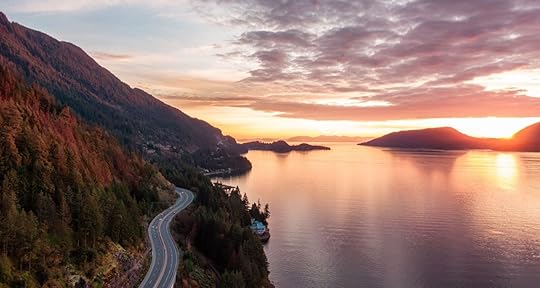
Photo: EB Adventure Photography/Shutterstock
If you know any of those destinations, you probably know what road connects them: the gorgeous Sea-to-Sky Highway. Needless to say, I’ve driven it more times than I can count, in everything from slow and snowy winter conditions to summer sunset drives where it feels like bald eagles are soaring just feet above my windshield. At only 101 miles, it’s not a particularly long drive, but it’s easy to make the argument that it’s one of the most beautiful stretched of road in the world. The winding, coastal road passes everything from beaches to waterfalls to glacier-covered mountains, and I would dare anyone to drive it without saying “woah” at least a dozen times. Even if you make absolutely no stops at all, you’ll still have amazing views from the passenger seat of the car.
Here’s where I recommend stopping on the Sea to Sky Highway during a summer or fall road trip, highlighting the best sights to see between Vancouver and Pemberton.
Here are complete Google Maps of part one of the trip (Vancouver to Squamish) and part two (Squamish to Whistler).
View this post on Instagram
A post shared by Old Vancouver Archives (@oldvancouverarchives)
The Sea to Sky Highway follows a route that’s been in use for thousands of years, originally serving as a vital travel and trade corridor for the Indigenous Sḵwx̱wú7mesh (Squamish) and Lil’wat Nations, who navigated the coastline and mountain valleys for seasonal migration, hunting, and commerce. The first “modern” roadway along the route was a rough gravel logging road in the early 1900s, built to facilitate timber operations north of Vancouver.
In the 1950s, it was expanded into a winding, two-lane highway, connecting Vancouver to Squamish and later extending to Whistler in 1965. That original highway included cliffside turns, rockslide hazards, and limited passing opportunities, making it one of the most challenging routes in British Columbia. But it’s been updated quite a bit since then, including ahead of the 2010 Winter Olympics, when British Columbia spent more than $600 million to widen and straighten the highway.
The term “Sea to Sky” has long been used by businesses and tourism agencies in the area, and reflects the dramatic shift in landscape as the highway begins at sea level around Howe Sound and climbs into the coastal mountains toward Whistler and Pemberton. It’s also called Highway 99.

Photo: Matador Network
Start: Vancouver
Vancouver deserves plenty of time to explore — but when you’re ready to leave, jump on the Sea to Sky Highway going north.
Stop 1: Cypress Mountain
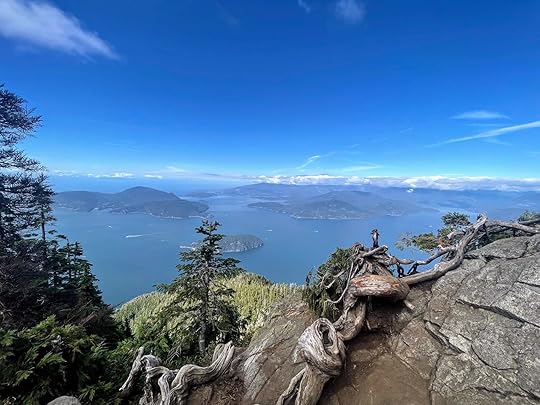
The view from a Cypress Mountain trail. Photo: Suzie Dundas
Hikers will likely want to make a stop at Cypress Mountain. It’s a ski resort in the winter but turns into a hub for hiking trails in the summer. The trails offer some of the most dramatic views near Vancouver, with routes that climb through dense coastal forests to high-elevation lookouts. A popular one is the Eagle Bluffs Trail, a five-mile out-and-back hike with an elevation gain of approximately 1,870 feet. It begins at the Black Mountain trailhead, ascends steeply through a mix of Douglas fir and western hemlock, then reaches exposed bluffs with panoramic views of Lion’s Bay and the Howe Sound.
Stop 2: Horseshoe Bay Beach Park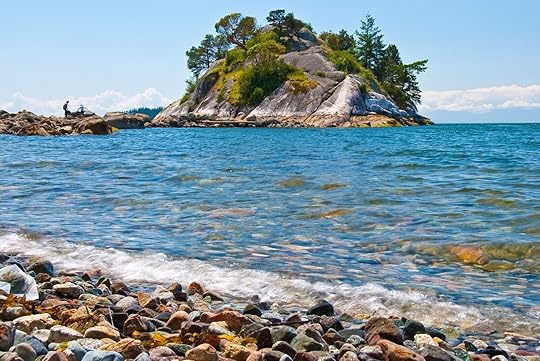
Horseshoe Bay Beach, just outside Vancouver BC. Photo: karamysh/Shutterstock
Horseshoe Bay Beach is a natural stopping point along the Sea to Sky Highway, offering a quiet contrast to the surrounding mountain landscapes. The pebble-covered shoreline provides views of Bowen Island and the ferry routes that connect the mainland to the outer Gulf Islands. While it’s a bit too cold for swimming, it’s pretty as can be, and The Lookout in the nearby village of Horseshoe Bay is a great place to stop for coffee and a pastry on morning trips.
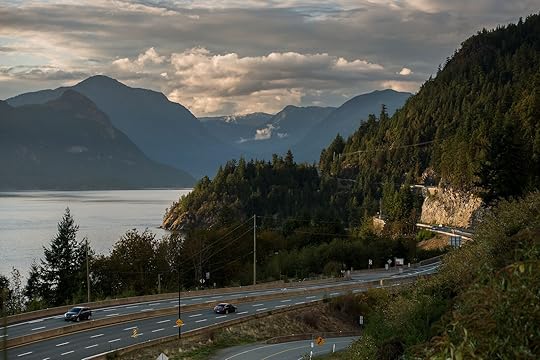
View of the Sea to Sky Highway around Tunnel Point. Photo: Destination British Columbia
Tunnel Point Lookout, just north of Lions Bay on the Sea to Sky Highway, offers a stunning view of Howe Sound’s fjord-like geography and the surrounding coastal mountains.
The pullout is small, with limited parking, but provides an unobstructed view of Bowen Island and the inlets that define this stretch of coastline. It’s a quick stop for drivers, though since it’s on the left side of the road, it may be easier to hit it on your way back to Vancouver. (You can do it while going north — just be sure to use your turn signal.)
Nearby is the popular Tunnel Bluffs hike, starting across the street. It’s a much longer hike that will take several hours, but goes to a beautiful lookout point known as Tunnel Bluff.

Photo: David Buzzard/Shutterstock
Porteau Cove Provincial Park is one of the few accessible waterfront stops along the Sea to Sky Highway, offering direct access to the Howe Sound. It was originally a ferry terminal but is now a small park with a boat launch, picnic areas, and a popular campsite. The shoreline is rocky, with driftwood scattered along the edge. Plus, the decommissioned pier is an excellent place for photography (leading lines, anyone?) or just sitting to admire the views for a bit. On clear days, you can see the Tantalus Range across the Sound — it’s especially beautiful in in winter and spring when snow caps the peaks.
The park is open 24/7 and has public restrooms, in case you just need a roadside break.
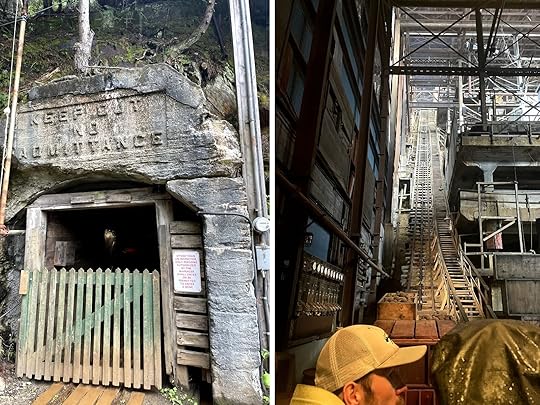
Scenes from the surprisingly fun Britannia Mine Museum complex. Photo: Suzie Dundas
The Britannia Mine Museum, just off the Sea to Sky Highway south of Squamish, offers a glimpse into British Columbia’s mining history in a setting that still bears the marks of its industrial past. It was once one of the world’s largest copper mines, and the site preserves many of the original buildings, including the massive mines themselves.
The most immersive experience is the underground mine tour, where visitors ride a rail cart into a historic tunnel while guides demonstrate early 20th-century mining techniques. The building is 20 stories of rusted steel and weathered wood, making it one of the most recognizable landmarks along the highway. Inside, there’s an impressive high-tech show, illustrating the scale of the operations that once took place here.
Beyond the main attractions, the museum grounds feature hands-on exhibits, including gold panning stations and a collection of old mining equipment, plus science-based exhibits on the damage caused by the mine and the ongoing efforts to restore the environment. There’s also a small coffee shop, a large gift shop, and rotating exhibits on loan from around British Columbia. It’s open daily and tickets for adults are $42 CAD.
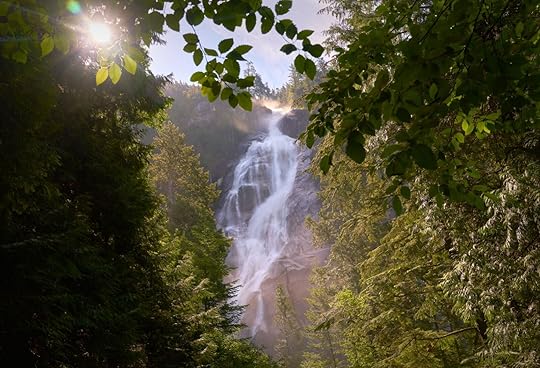
Photo: Max Lindenthaler/Shutterstock
Shannon Falls Provincial Park is a brief but worthwhile stop along the Sea to Sky Highway, especially as it allows you to see one of British Columbia’s tallest waterfalls without any strenuous hiking. The falls drop 1,105 feet down a series of smooth granite cliffs. It’s most powerful in spring and early summer with snow melt, but flows year-round.
A short, well-maintained trail leads to the base of the falls, with a few well-maintained dirt trails to viewpoints. The area has a cool, damp atmosphere, even on warm days, and is a gorgeous place for some cheesy group photos — especially in the lush pockets of forest surrounding the falls. Dogs are welcomed, but should be on leash.

Photo: Explore Squamish
Stawamus Chief, a.k.a “The Chief,” is sheer granite monolith that towers over Squamish. It’s both a natural landmark and a test of endurance for hikers, climbers, and even the occasional professional mountain biker. It rises more than 2,000 feet above the valley floor and is usually dotted with rock climbers most days. Near the base, bouldering is popular, and a series of winding walking paths will lead visitors in and our of the forest, passing groups of climbers and chalky rock faces on the way. Interestingly, the Chief’s vertical walls are part of the same geological formation as Yosemite’s El Capitan.
There’s a huge parking area at the base, often filled with vanlifers in the summer months, and even a longer path that connects the Chief to Shannon Falls. Uphill hikers can undertake a challenging hike to the top, but you’ll find plenty of people and dogs just hanging out around the base and exploring the flat trails at the bottom year-round.

The Sea to Sky Gondola. Photo: Destination British Columbia/Sea to Sky Gondola/Paul Bride
The Sea to Sky Gondola is the most accessible way for non-hikers to take in the near-endless vistas offered by the Coast Mountains. It’s a gondola that carries visitors nearly 3,000 feet above sea level to the summit of The Chief. At the top, a network of trails and viewpoints extends beyond the main lodge. There’s the “Sky Pilot Suspension Bridge,” multiple viewing decks, and several walking trails. The most popular are the Panorama Trail to an open viewpoint, and the Spirit Trail, which is more of a quieter walk through the forest. The lodge itself has a cafe, gift shop, outdoor deck, and fire pits, and fire pits. It’s open year-round, though of course, the views can be obstructed on cloudy or snowy days.
Tickets for adults start at $68 CAD for round trip, but you can hike up and just take the gondola back down for $19.

Photo: Suzie Dundas
Okay, it’s certainly not the fanciest place in Squamish — but if you’ve been active all day and worked up an appetite, I simply adore the spicy cauliflower banh mi (with fries, naturally) from Sunny Chibas. It’s a one-of-a-kind place that set up shop a few years ago inside a former fast food restaurant. But don’t worry: as soon as you walk in, you’ll know it’s not your average McDonalds. It’s extremely popular, so order online or be prepared for a wait if you go any time around lunch or dinner.
And if you’re on the hunt for creative cocktails, complete with mushrooms and smokey finishes (and, I’m pretty sure, some kind of mozzarella-infused booze last time I was there), swing by Raincity Distillery. It’s semi-hidden in an industrial park but is worth the very short detour.
It should go without saying, but consider staying in Squamish if you’re planning on sampling the spirits.

Photo: Suzie Dundas
Brackendale Eagles Provincial Park, just north of Squamish, is one of the most remarkable places to see bald eagles in North America. From around November to January, more than 1,000 eagles regularly gather along the Squamish River, drawn by the late salmon run. But even outside of the eagle season, you’re still likely to see a few hanging around, especially if you’re patient. The estuary also draws harbor seals, which you can often find by looking for their dark eyes just above the waterline as they scan for fish.
There’s a popular bar and restaurant with an outdoor deck (The Watershed Grill), and a level, wide walking path along the river. There’s even a local Facebook page where volunteers post updates about eagle sightings during the winter.
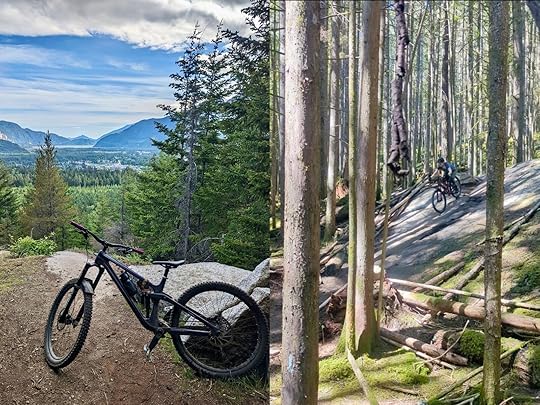
Photo: Suzie Dundas
Mountain bikers who know what they’re doing will want to explore the trails at Alice Lake, where black-diamond trails like Rupert and Pamplemousse provide examples of some of finest slab and feature riding in BC. Beginners will want to stick to flatter trails like Jack’s Trail. If you don’t bike, you still may want to post up at the beaches at Alice Lake, or even spend the night at one of the park’s pretty forested and lake-view campsites.
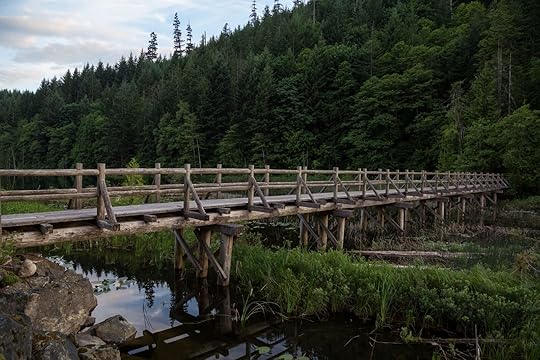
Photo: EB Adventure Photography/Shutterstock
Brohm Lake, just north of Squamish, is an easy detour off the Sea to Sky Highway, offering a quiet stretch of water surrounded by forest and rocky bluffs. A looping trail follows the shoreline and weaves through second-growth trees and past small cliffs where swimmers and paddlers often hang out in the warmer months. Unlike the glacier-fed lakes farther north, Brohm is warmer, though it’s never warm by tropical beach standards.
While the park is certainly popular, it sees far fewer visitors than Shannon Falls or The Chief, making it a good place for a slower-paced stop.
As of May 2024, the wooden bridge across Brohm Lake was closed. So before you go, check on the current status and have a backup hiking plan, as it’s unknown when it’ll be repaired.

Photo: Thye-Wee Gn/Shutterstock
The Tantalus Lookout, very close to Brohm Lake, is an easy roadside pullout with unobstructed views of the Tantalus Range. The jagged, glaciated peaks are a stark contrast to the cliffs below and mark the unofficial beginning of the elevation gain as you leave Squamish and start climbing toward Whistler. On clear days, the icefields can catch the light and almost look like they’re sparkling in the distance.
The lookout itself is a simple pullout with a few interpretive signs, but it’s one of the better places to stop and take in the scale of the landscape without a long hike.
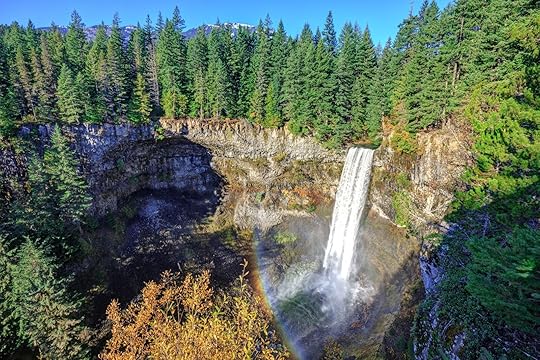
Photo: JamesChen/Shutterstock
The Brandywine Falls Trail in Brandywine Falls Provincial Park is a short, easy walk to one of the most dramatic waterfalls along the Sea to Sky Highway. The round trip trail is only .6 miles long and gains less than 50 feet in elevation, making it more of a walk you can do in flip-flops than an actual hike. However, you do get to stroll along a lovely path past fir trees and moss-covered rocks.
The viewpoint is on the edge of a cliff overlooking the falls, which plunge 230 feet in a near-perfect vertical drop before continuing through the narrow canyon carved by eons of water movement. On a very clear day, you can sometimes even see Black Tusk in the distance — the jagged, volcanic peak that dominates the skyline between Squamish and Whistler. Considering how short the walk is and what a stunning viewpoint it opens to, it’s a must-stop on any Sea to Sky Highway road trip.
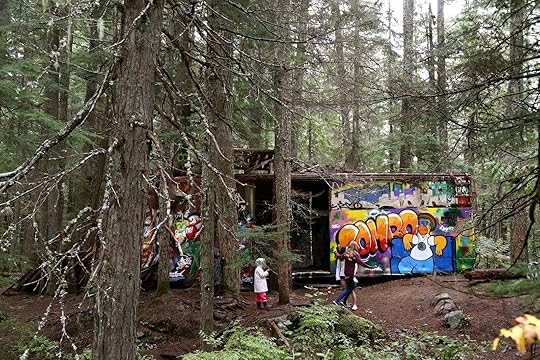
The Train Wreck near Function Junction in Whistler. Photo: Destination British Columbia/BC Ale Trail
The Whistler Train Wreck Trail is a short but worthwhile detour just south of the town’s Function Junction, offering an unusual mix of history, graffiti-covered ruins, and dense coastal forest. It’s a short trail, making it a great place to get out and stretch your legs (or your dogs legs, if you’re traveling with a dog in tow, like I do). It’s one of the easiest hikes around Whistler, at only 1.2 miles round trip and roughly 100 feet of elevation gain.
The trail runs along an easy-to-follow path through old-growth trees before crossing a suspension bridge spanning the Cheakamus River. On the other side, you’ll find a series of rusting boxcars, left in situ after a 1956 derailment. Over the years, they’ve been claimed by local artists, and every reachable surface is covered in layers of graffiti. Despite being so close to Whistler, it feels fairly remote, and is a great place to get a sense of how peaceful the forest can be without straying too far off the Sea to Sky Highway. Parking is on Whistler Quarry Road, making it only about a two-minute detour.

The Train Wreck near Function Junction in Whistler. Photo: Destination British ColumbiaBC Ale Trail
Whistler Village is a natural stop along the Sea to Sky Highway, where mountain wilderness meets a lively alpine town. Though sprawling, the village is designed for walking, with wide, winding pathways lined by timber-and-stone buildings, patios spilling onto plazas, and mountain views at nearly every turn. Even a short stop allows for a walk through Whistler Olympic Plaza, a visit to the Audain Art Museum, or a quick trip to browse the fascinating stories and exhibits at the Squamish Lil’wat Cultural Centre. In the village, you’ll find everything from cheap ramen to luxury restaurants (many of which have off-season specials).
Despite its reputation as a winter destination, the village hums year-round, and it’s hard to go there and not feel the energy of a place full of passionate, happy people. I love Whistler for the world-class bike park, but I’m just as happy there strolling with my dog through the village or running out for a hot coffee in the morning.
Also very close to Whistler is the Whistler Scandi Spa, offering multiple hot and cold pools for the perfect Nordic plunge experience. If you’d rather be more active, Lost Lake is walkable from Whistler Village. A wide, packed-gravel trail winds through tall pines and firs, leading to the lake’s shallow waters. In summer, the beaches draw swimmers and paddleboarders, while wooden docks offer places to sit and take in the view. The trail network around the lake is extremely popular with hikers, bikers, and snowshoers, making it a popular place whether you’re on or off the water.

Photo: Wirestock Creators/Shutterstock
Nairn Falls Provincial Park, just south of Pemberton, isn’t the biggest park in the area, but its most well-known claim to fame is certainly worth seeing: Nairn Falls. The 1.5-mile round-trip trail leads to a rushing, 197-foot-tall waterfall, following the turquoise water of the Green River in the process. It’s straightforward and easy to follow with slight up and downs but nothing too strenuous. Parking is just off the Sea to Sky Highway, near the Nairn Falls Campground.

Keyhoe Hot Springs near Pemberton. Photo: EB Adventure Photography/Shutterstock
You’ll be in Pemberton just a few minutes after leaving Nairn Falls. Pemberton is the unofficial end of most Sea to Sky Highway roadtrips, but you can continue further north into the mountains to reach destinations like Joffre Lake, Duffey Lake, Rogers Creek, Seton Lake, or Lillooet. After Pemberton, lodging and dining options along the route start getting a loss fewer and farther between, so make sure to plan where to stay, fuel up, and dine before heading further north. 
A New Direct Flight to Panama City, Panama, From San Diego Makes It Easier to Reach the Crossroads of the Americas

There’s nowhere quite like Panama. The country is on the isthmus linking Central and South America, and is filled with natural beauty, rich culture, some of the most biologically diverse rainforests in the world, and unparalleled scuba diving on both coasts. And as of June 25, the country will be even easier for people in the United States to fly directly to the capital, Panama City.
Copa Airlines, a leading Latin American airline and the most punctual airline in the region, recently announced four non-stop flights from San Diego to Panama City on Mondays, Wednesdays, Fridays, and Sundays. San Diego is Copa’s third destination in California and the 17th route in the United States. Flights will leave San Diego International Airport at 8:58 PM and arrive in Tocumen International Airport at 5:20 AM, with flights the other direction departing Panama City at 1:16 PM and arriving in San Diego at 6:15 PM.
There’s much to explore in Panama, though this stop can also be the gateway to other parts of South America. Panama City is Copa’s “Hub of the Americas,” and an important connection point between North and South America as well as the Caribbean — Copa Airlines has direct connections to 86 destinations in 32 countries. 
The Most Stunning Airbnbs to Book for April

As winter’s chill recedes, destinations across the globe shake off their slumber in April. Forget the crowded summer rush; this is the sweet spot. From the Arctic’s thawing landscapes to the blooming cities of the American South, April is the perfect time to experience the world in transition. Whether you’re drawn to the cultural explosion of San Antonio’s Fiesta, the wildflower-strewn deserts of Arizona, or simply the chance to snag a quieter moment at Orlando’s theme parks, there’s a getaway for every type of traveler. Here’s a peek at some of the most stunning Airbnbs to consider as your base for these springtime adventures.
We hope you love the spaces and stays we recommend! Just so you know, Matador may collect a small commission from the links on this page if you decide to book a stay. Listed prices are accurate as of the time of publication.
Experience the Arctic spring in Greenland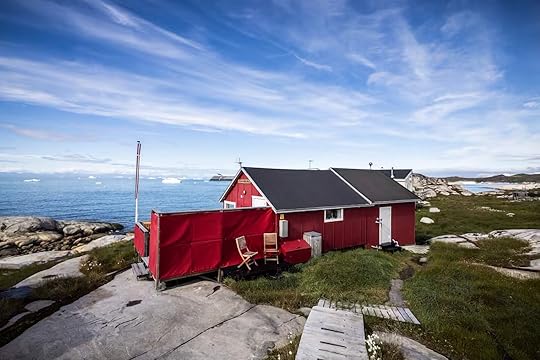 Photo: Airbnb
Photo: Airbnb Photo: Airbnb
Photo: Airbnb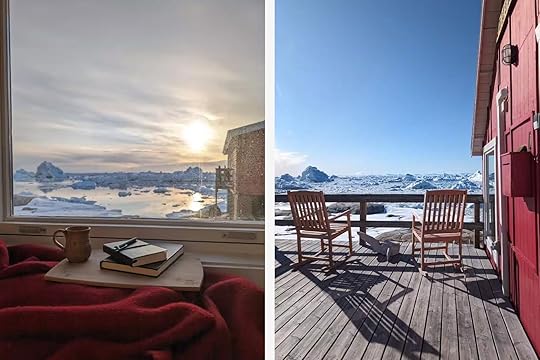 Photo: Airbnb
Photo: Airbnb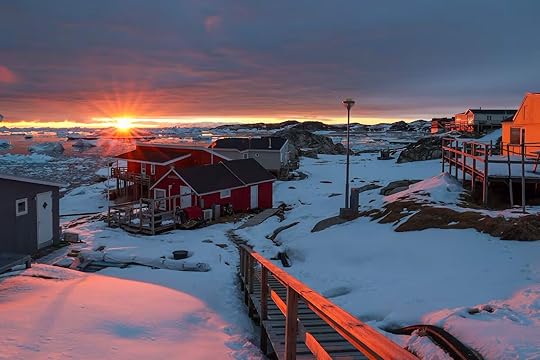 Photo: AirbnbSee more photos
Photo: AirbnbSee more photosGreenland’s new international airport in the capital city, Nuuk, opened in November 2024, and with the first direct flight to the island, it’s likely to be a popular escape come summer for those looking for a “coolcation.” Matador named Greenland one of the places to go for 2025, and if you like the sound of dramatic glaciers, sleepy fishing towns, and nautical adventures, you might want to lead the charge and visit in spring. It’s also an excellent time to witness the untamed beauty of the Arctic in a state of awakening.
I wouldn’t say Airbnbs in Greenland are in short supply, but the choice is a smidge more limited than other islands near the US. That said, there are some wild options, like this glass-fronted waterside cabin where you can watch the icebergs bob on Ilulissat Isfjord (a UNESCO World Heritage site) from the living room. The one-bed red timber home is centrally located in Ilulissat, a one-and-a-half-hour domestic flight from Nuuk.
Four guests, one bedroom
Price: $161 per night
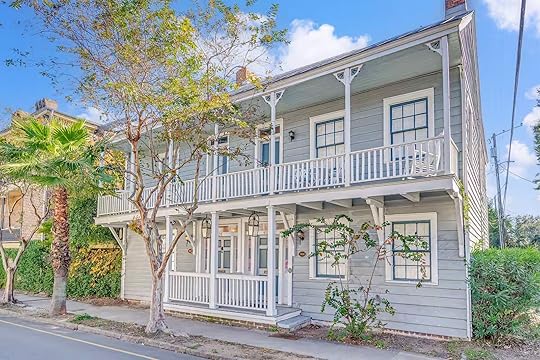 Photo: Airbnb
Photo: Airbnb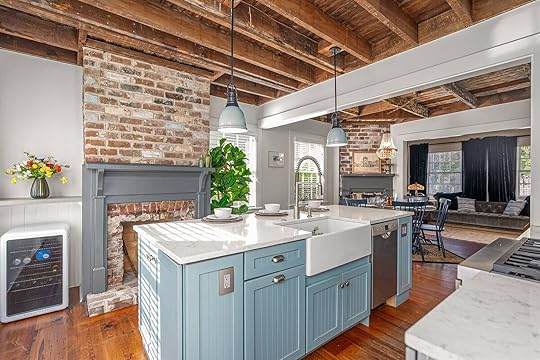 Photo: Airbnb
Photo: Airbnb Photo: Airbnb
Photo: Airbnb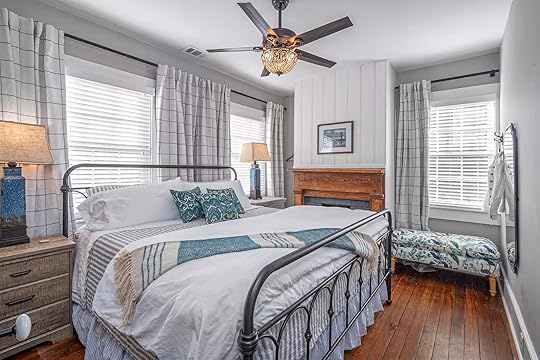 Photo: AirbnbSee more photos
Photo: AirbnbSee more photosLike Charleston, Savannah comes to life with beautiful blooms in April, and comfortable temperatures mean strolling the parks, cobblestone streets and oak-canopied avenues is more pleasant than in the humidity of the summer. The city’s famed squares become living canvases in April, bursting with the pinks, purples, and shades of white of azaleas and dogwoods.
Choose an Airbnb with character in Savannah. And for that, you’re spoilt for choice. My suggestion is this 1860s post-and-beam three-bedroom townhouse. Located in the historic district, it’s a short walk from the city’s top attractions, award-winning restaurants, and parks in bloom. The historic home features traditional haint blue ceilings, a shared courtyard space, and comes with reserved off-street parking.
Six guests, three bedrooms
Price: $231 per night
 Photo: Airbnb
Photo: Airbnb Photo: Airbnb
Photo: Airbnb Photo: Airbnb
Photo: Airbnb Photo: AirbnbSee more photos
Photo: AirbnbSee more photosApril’s typically mild weather provides an ideal backdrop for exploring San Antonio’s historic sites and natural beauty. However, the star of the show this month is the annual Fiesta San Antonio, a ten-day extravaganza of color, sound, and flavor. Fiesta San Antonio, a tradition rooted in the city’s history, celebrates the battles of the Alamo and San Jacinto but has evolved into a city-wide cultural festival. The River Walk is the heart of the action. You’ll find parades winding their way along the riverbanks, live mariachi music, and exceptional Tex-Mex street food.
If you’d like to stay near The River Walk, check out Matador’s selection of the best Airbnbs. Alternatively, bookmark this huge six-bedroom mansion a few minutes from the Alamo if you’d still like to be within walking distance of the festival but would prefer some quiet time. It’s got all the bells and whistles for a fun group vacation: a state-of-the-art golf simulator, a pool and Jacuzzi, outdoor games, and a theater room. There are so many entertainment options; you can have your own fiesta at home.
16+ guests, six bedrooms
Price: $900 per night
 Photo: Airbnb
Photo: Airbnb Photo: Airbnb
Photo: Airbnb Photo: Airbnb
Photo: Airbnb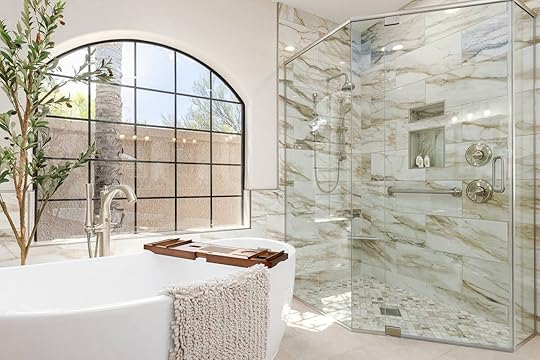 Photo: AirbnbSee more photos
Photo: AirbnbSee more photosFollowing a winter’s rain, the Sonoran Desert comes to life with delicate wildflowers of orange poppies, desert bluebells, and yellow brittlebush. April days are warm and sunny, ideal for exploring the network of trails that wind through Saguaro National Park.
There are some exceptional rentals near the national park. These tend to be off the beaten path and require a sturdy vehicle. If you’d prefer to be closer to Tucson but still benefit from mountain views and desert-inspired decor, have a look at this luxury four-bedroom property within a gated community in Catalina Foothills. It’s one of Airbnb’s top one percent listings. After a day in the park, you can relax in the heated pool and spa, and the uber-chic sand-colored interior design is scrumptious.
Eight guests, four bedrooms
Price: $453 per night
 Photo: Airbnb
Photo: Airbnb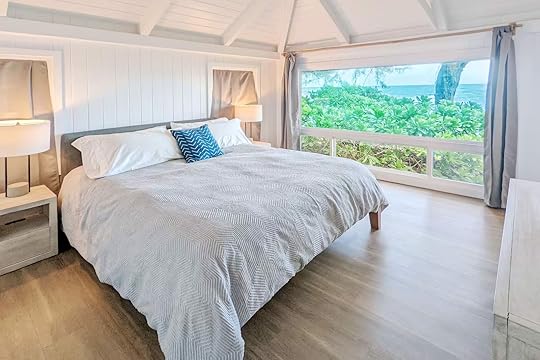 Photo: Airbnb
Photo: Airbnb Photo: Airbnb
Photo: Airbnb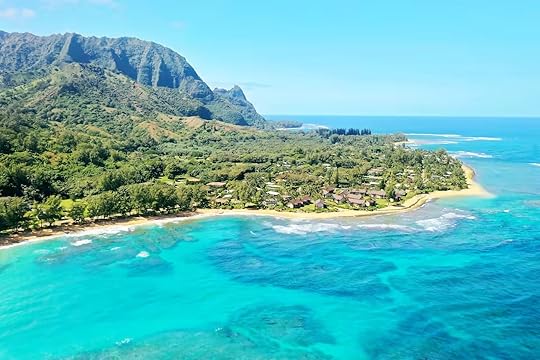 Photo: AirbnbSee more photos
Photo: AirbnbSee more photosApril is a shoulder season in Hawai’i, with good weather, better deals, and fewer crowds than the peak summer months. It’s also the last opportunity to spot migrating humpback whales in the waters surrounding the islands before their northward journey.
One to bookmark, this is one of the prettiest Airbnbs I’ve found in Hawai’i. It’s absolutely perfect for a couple or small family. The one-bedroom is in the beautiful town of Hāʻena. If you want to get away from busy beaches, main touristy spots, and crowds, there is where you want to be. The home is a quick bike ride from Tunnels Beach, which has some of Kauai’s best snorkeling and opportunities to swim with sea turtles. The newly renovated cottage has panoramic ocean views from every room — including the bathroom with a tub looking out over the water.
Four guests, one bedroom
Price: $688 per night
 Photo: Airbnb
Photo: Airbnb Photo: Airbnb
Photo: Airbnb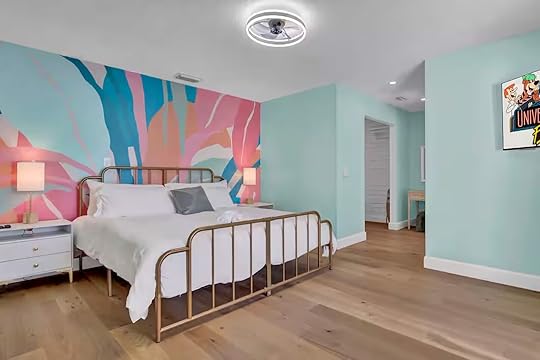 Photo: Airbnb
Photo: Airbnb Photo: AirbnbSee more photos
Photo: AirbnbSee more photosSpring break is over. So now is the ideal time for a family vacation to Orlando’s theme parks without the summer heat and humidity. While you’ll still need to wait, the lines are generally shorter. If you want to experience one of the parks with young kids, April is your window.
If you’re looking for a themed rental — we’re talking Micky Mouse glassware and Frozen patterned wallpaper — have a look over Matador’s selection of properties near Disney. But if you’d rather something a little more grown up, check out this three-bedroom family home in central Orlando. It’s around 20 minutes from both Disney and Universal and has everything you’d need for the family: a heated pool, hot tub, yard space, and an outdoor dining area.
Six guests, three bedrooms
Price: $296 per night
 Photo: Airbnb
Photo: Airbnb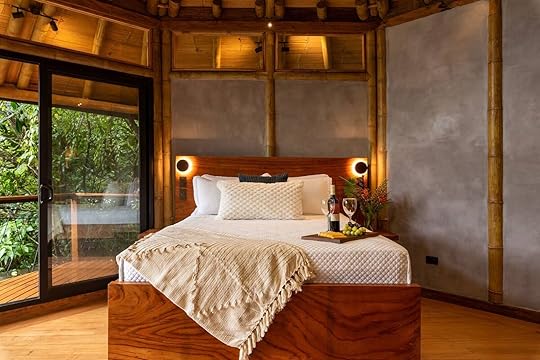 Photo: Airbnb
Photo: Airbnb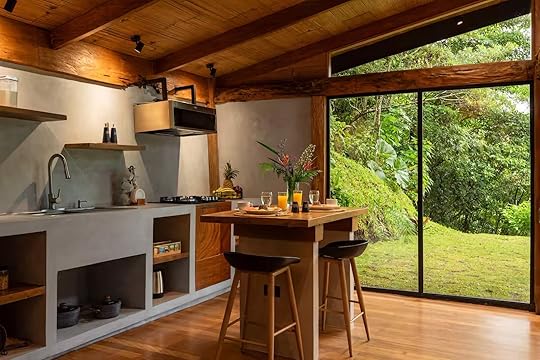 Photo: Airbnb
Photo: Airbnb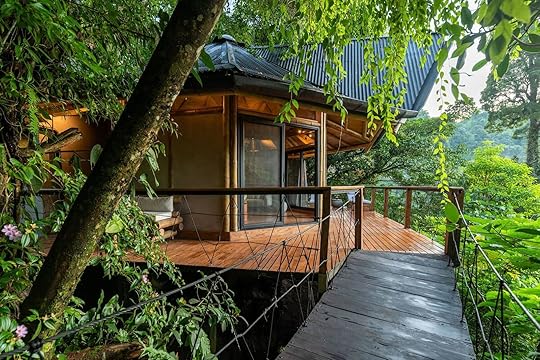 Photo: AirbnbSee more photos
Photo: AirbnbSee more photosFor wildlife enthusiasts, April is one of the best months to visit Costa Rica and enjoy the country’s renowned biodiversity. It’s the end of the dry season, so there are optimal conditions for wildlife observation near water sources, and underwater visibility is exceptional for snorkeling and diving. Hiking trails, especially in the cloud forests of Monteverde, are also dry, meaning more routes are accessible.
Whether you’re after a beachy paradise or rainforest adventure, there are some mind-blowing Airbnbs across Costa Rica. For a stay to remember, this canopy home in Monteverde won’t disappoint. The romantic one-bed will allow you to view wildlife from your deck, but it’s far from a jungle hut. The luxurious hideaway has all the mod-cons you’d expect at a five-star hotel. It’s also situated on the famous hiking trail of El Tigre Waterfalls.
Three guests, one bedroom
Price: $495 per night
 Photo: Airbnb
Photo: Airbnb Photo: Airbnb
Photo: Airbnb Photo: Airbnb
Photo: Airbnb Photo: AirbnbSee more photos
Photo: AirbnbSee more photosApril in Cancún means three things: warm weather, clear skies, and fewer crowds than during spring break. If you’ve got the winter blues and need a little sunshine pick me up it’s a great time to go. You can explore popular archaeological sites without overwhelming crowds, and the ocean, undisturbed by the summer storms, is crystal clear.
Rental properties in Cancún are also notoriously expensive, but you might find prices for April more realistic. Airbnbs here range from ocean-view condos and apartments to over the top villas. If you have a group, check out this waterfront five-bedroom. The luxe property is right in the center of the hotel zone and just 10 minutes from downtown. It has the same amenities as a five-star (there’s a daily housekeeping service) but offers more privacy and flexibility than a hotel.
12 guests, five bedrooms
Price: $1,035 per night
 Photo: Airbnb
Photo: Airbnb Photo: Airbnb
Photo: Airbnb Photo: Airbnb
Photo: Airbnb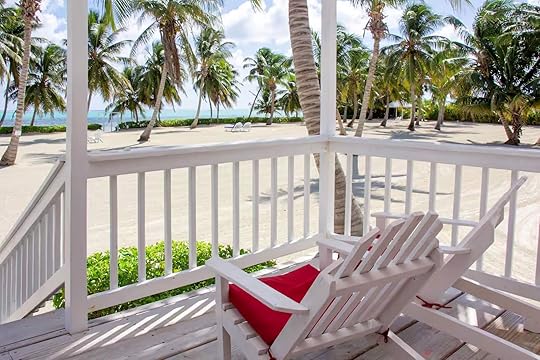 Photo: AirbnbSee more photos
Photo: AirbnbSee more photosFor those who have dreamt about diving in Belize’s most famous visitor attraction, the Great Blue Hole, April is the prime time. The absence of strong currents combined with the clear waters means visibility often exceeds 100 feet. It’s also spawning season for various species. You may witness snappers, groupers, and other reef dwellers courting. The dry season also makes exploring The Maya ruins and the jungles more manageable and comfortable.
If you’re a solo traveler or a couple, this colonial-style bungalow makes an excellent base. It’s located on Ambergris Caye, Belize’s largest island, and is just off the second-largest barrier reef in the world. You’ll find dive shops plenty here, and the proximity to coral gardens and opportunities to see turtles, barracuda, and seahorses are right on your doorstep. This Airbnb is located in the north of the island on a family-run coconut plantation. The tiny house is literally on the sand with unobstructed ocean and reef views.
Two guests, one bedroom
Price: $350 per night
 Photo: Airbnb
Photo: Airbnb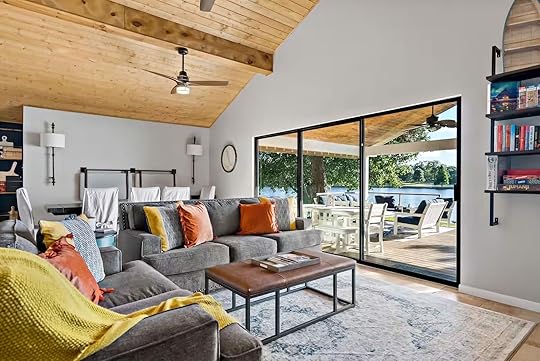 Photo: Airbnb
Photo: Airbnb Photo: Airbnb
Photo: Airbnb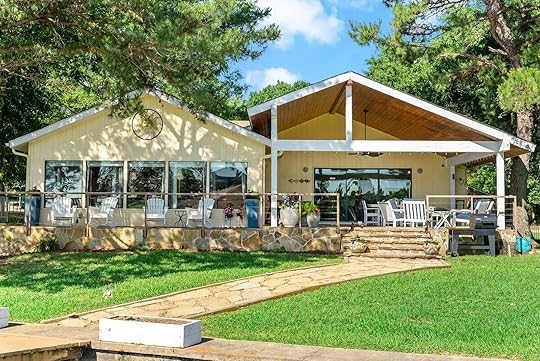 Photo: AirbnbSee more photos
Photo: AirbnbSee more photosTexas’ flower, the bluebonnet, marks the arrival of spring, and the best place to see the bloom in Texas Hill Country is in and around Ennis. Between the middle of March and the end of April, the striking blue blossoms paint the region’s terrain, roadsides, and grasslands with a stunning azure hue. Ennis, officially recognized as the “Bluebonnet City of Texas,” celebrates with the annual Ennis Bluebonnet Trails and Festival in April, featuring scenic driving routes, guided wildflower walks, live music, and local artisan markets.
Around one hour from Ennis is this waterfront family home in Mabank. With three bedrooms, tons of outdoor space, a private dock, and a grill, it’s the perfect base for a spring getaway to Texas. It’s also pet friendly (although there is a fee) and offers sunrise views over the deep cove, where you can also fish. 
Nine guests, three bedroom
Price: $395 per night
Matador Network's Blog
- Matador Network's profile
- 6 followers



